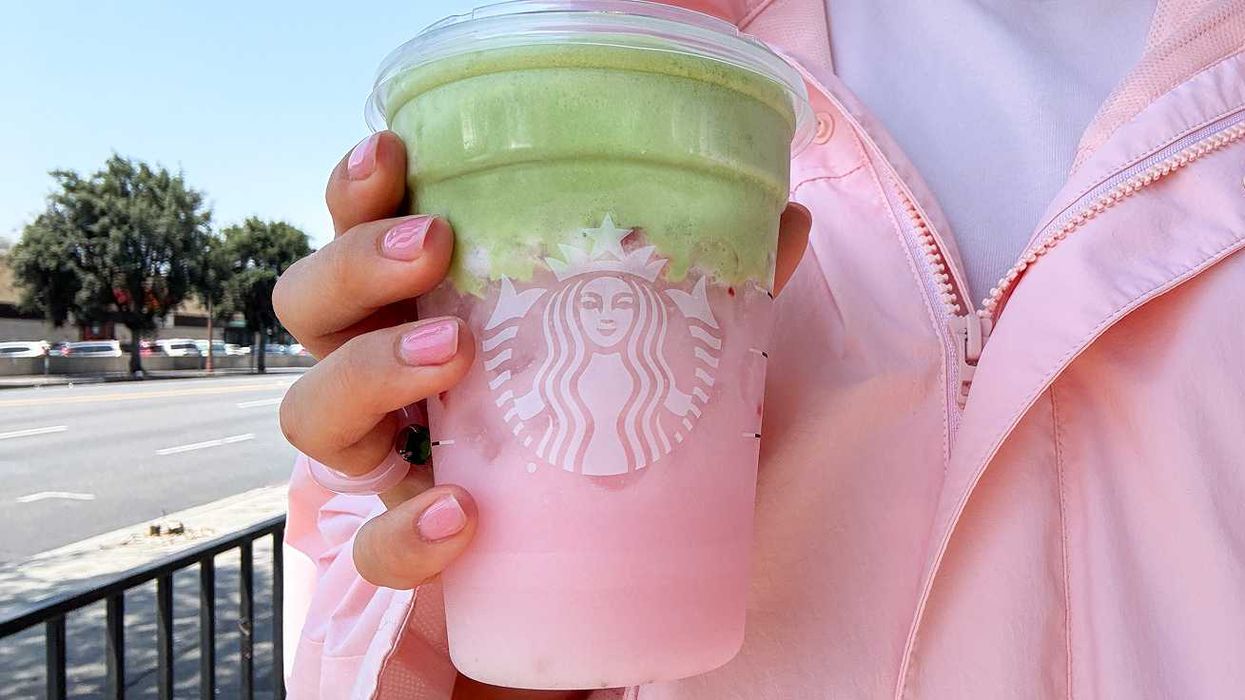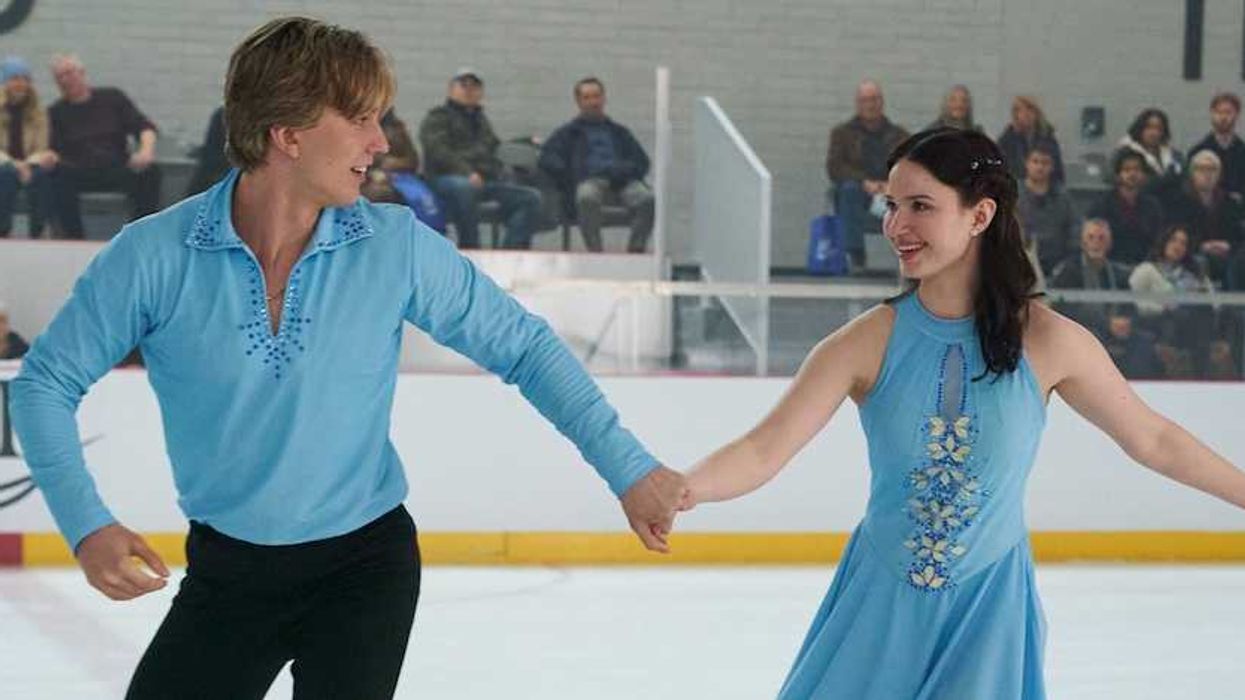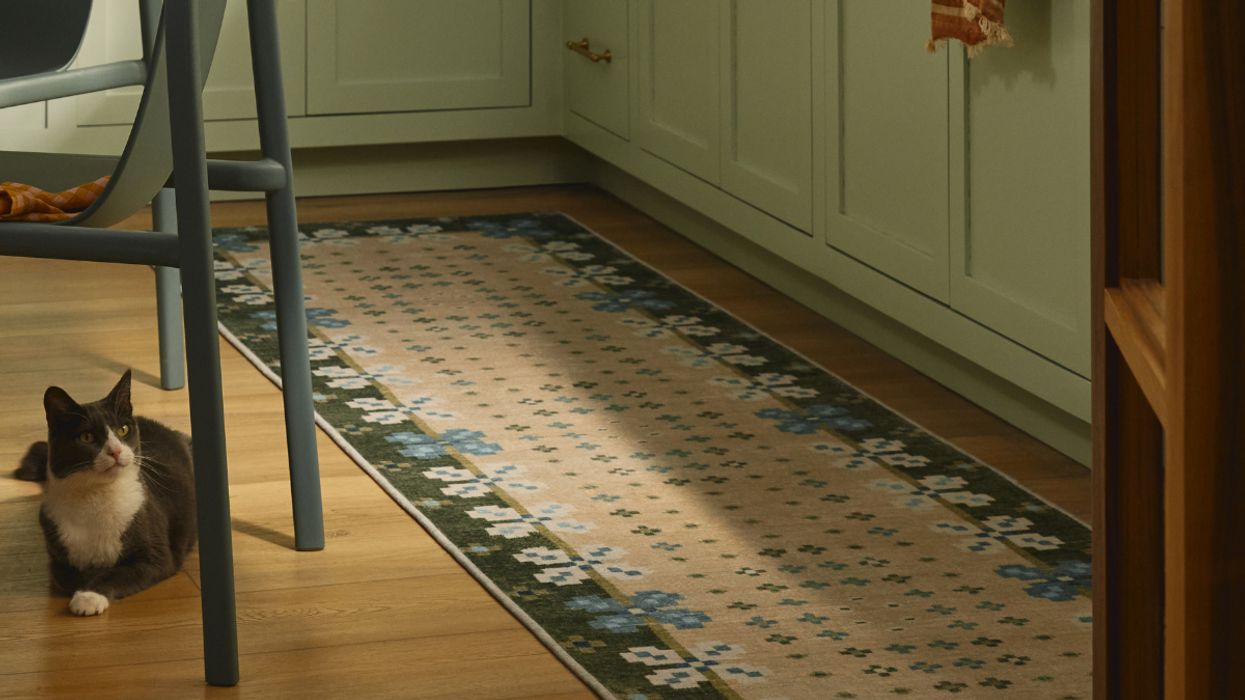Forget Paris.
Swiss Bliss: 10 Reasons Why Switzerland Should Be Your Fall Vacation Spot
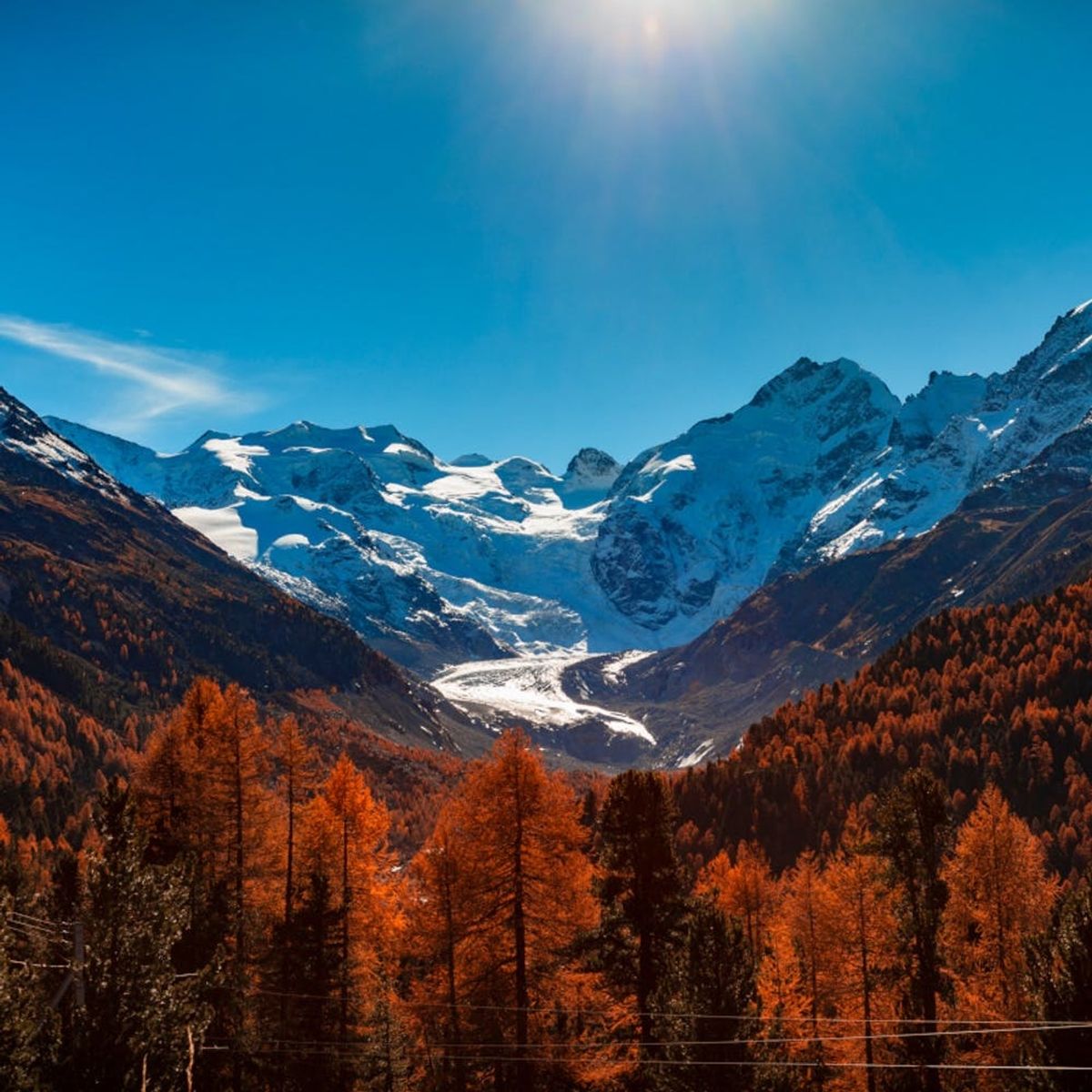
We’ve already written about how the Swiss Alps are just as exhilarating to visit in the summertime as they are during the winter ski season, but we neglected to mention the most underrated (and picturesque) season of all: autumn. Not only is fall an opportunity to witness colorful alpine foliage, but it’s also a cost-efficient time of year to travel to this famously finance-savvy (and fittingly expensive) European country — airfares drop at the end of August.
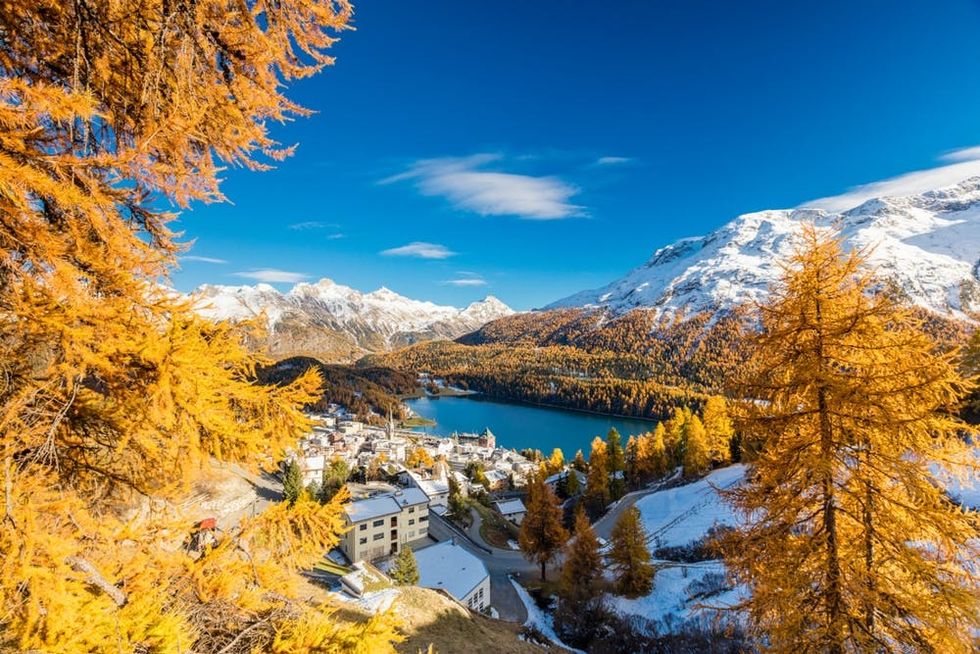
Once September begins, the majority of tourists have already left for home, while the locals are returning from their holidays in Lake Como or the south of France to reclaim theirs. If that sounds impossibly glamorous, it is. Everything feels more elegant in Switzerland — from the sailboats on Lake Zurich and the vineyards of the Rhine Valley to the palaces of Lausanne and the narrow streets of Pontresina. Forget Paris: Switzerland is always a good idea.
You can capitalize on the balmy weather by hiking above the clouds in the Alps or biking through Swiss wine country. Of course, there are plenty of less strenuous options. Even in the tiniest of villages, there’s opulence to be found — such as in Bad Ragaz, where jet-lagged travelers can book hyper-luxurious spa treatments in the world’s oldest wellness resort. Why not treat yourself?
I recently spent two weeks in Switzerland and can safely say that I was living better (and happier) than I ever had in my life. And there’s no better time of year for said transformation: ‘Tis the season for reinvention, after all. In the immortal words of F. Scott Fitzgerald, “Life starts all over again when it gets crisp in the fall.” To that end, we suggest you live like the Great Gatsby himself with an annual pilgrimage to Switzerland in the brisker months (just try to avoid swimming pools). Read on to find out why Switzerland should be on your fall bucket list for this year and all the years to come.
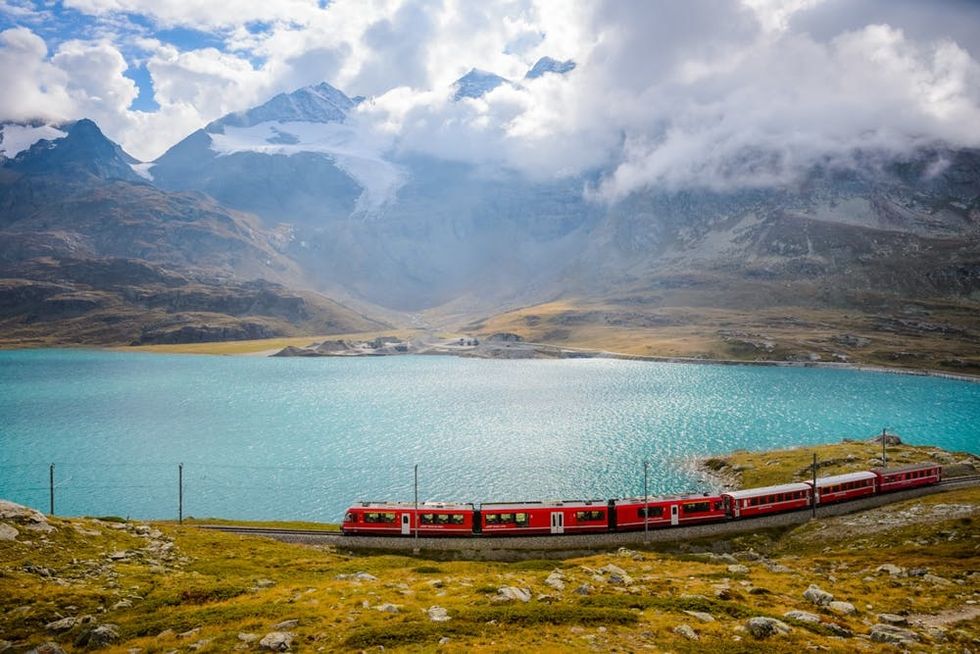
1. Traverse Alpine Tunnels on the Glacier Express Train: There is no better way to explore the Swiss Alps than the Glacier Express train, and mid-October is the best time to do just that. The oversized windows and transparent ceilings are the perfect vantage point to observe the sweeping countryside, reminiscent of sightseeing buses in the Scottish Highlands. Enjoy a delicious boxed lunch (cheese, wine, bread — Swiss basics) while you weave in and out of the darkness of the Alpine tunnels, pathways carved through the Alps for the railway system to go right through the very mountains. Ride the Glacier Express from St. Moritz to Zermatt to observe the majestic Matterhorn at the end of your journey (the eight-hour trip can be broken into multiple days).
A Swiss Travel Pass allows you to travel by train, by bus, or by boat — not to mention by cable car or chairlift up the mountaintop — and the entire Swiss transit system is exceedingly easy to navigate thanks to a new (free!) app, the Swiss Travel Guide. The price of the Glacier Express is the same as the other trains on the pass, aside from the reservation fee, which is CHF 43 in the summertime but drops to CHF 23 in the low season (mid-October to late March).
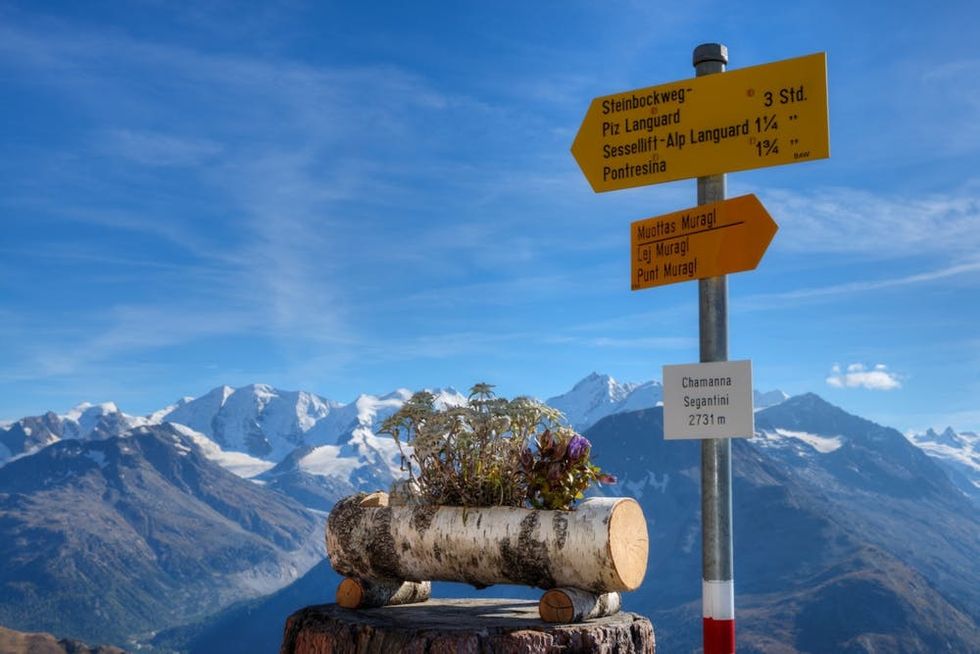
2. Hiking Muottas Muragl to Chamanna Segantini: The Muottas Muragl mountain, on the southern slopes of the Blais de Muottas, overlooks the lakes and glaciers of the Engadin Valley, providing one of the most beautiful vistas in the country. If you wake especially early for your hike, don’t be surprised if you start your ascent above the clouds. Take the funicular up Muottas Muragl to begin your way to Chamanna Segantini, the hut named after famous Swiss artist Giovanni Segantini. Revel in the breathtaking panoramic view from the steep little café at the top of the world (8,960 feet, to be exact), and refuel with some pastries or tea before descending down for lunch at the Alp Languard, AKA the Paradis Hut.
Fall is the best time for hiking in Switzerland because the trails can be hot and crowded from July until late August. Come September, the mountains are still calling — but to you, and only you. Hiking is also the best way to appreciate the alpine foliage, which is at its most magnificent in the fall (in our humble opinion, at least). The green lichen on the rocks gives the landscape a Jackson Pollack vibe, enhanced by the yellow grass, red blueberry bushes, and golden lark trees — the color of Switzerland in the fall. The weather is always unpredictable (pack layers!), but if you’re lucky, you’ll also enjoy an “Altweibersommer,” or period of unseasonably warm temperatures, though it always gets cold at the top.
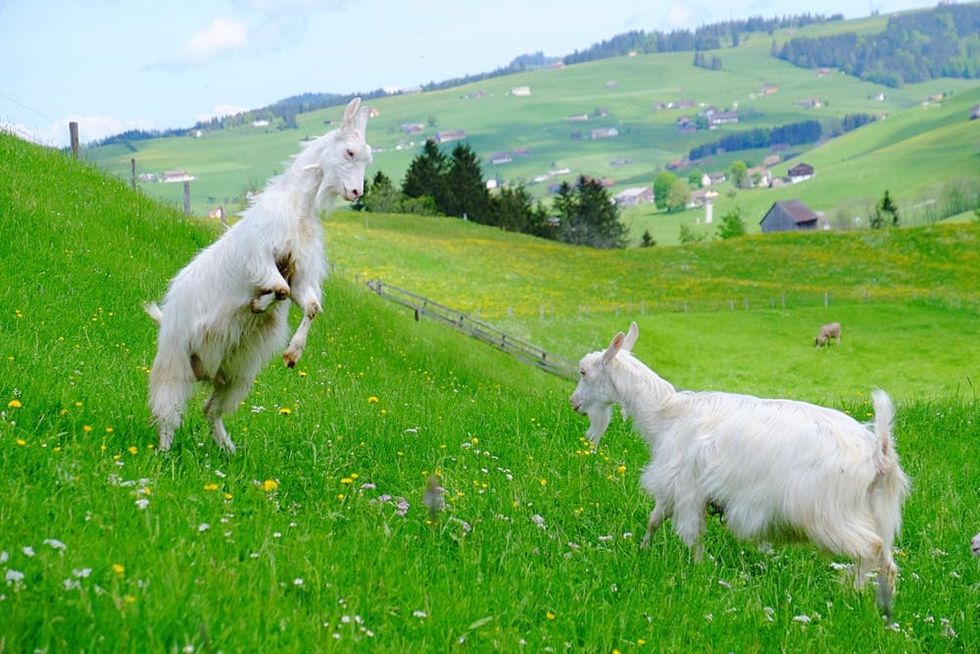
3. Goat Yoga and Sailing in St. Moritz: Though this (devastatingly) beautiful region invented winter tourism, many still associate St. Moritz with furs and extravagance more than they do with barn animals. Well, we’re here to prove you wrong. “Goats before guys,” announced Nicole Buess, owner of the goat yoga operation that’s sweeping through the Engadin Valley. It’s not hard to see why: The goats are positively adorable, and they treat Buess like she is their mother. Which she kind of is: For her 50th birthday, she asked for donations to rescue the goats she had grown fond of on her daily commute. Now they’ve escaped their death sentences for a life of goat trekking and whimsical yoga classes. They certainly seem very appreciative, and after one afternoon in their curious, klutzy company, you will be as well.
Another oddly meditative excursion is a sail upon Lake St. Moritz via the St. Moritz Sailing Club, which is open until the end of October. Warning: The boats they sail are specially designed for racing on the lake, so even the most adept New England sailor will be taken aback by the swiftness of the boat’s movements at the slightest touch of the rudder. It felt like sailing a race car, though not nearly as intimidating as mountain biking.
And, of course, it wouldn’t be a trip to St. Moritz if it weren’t crowned with a little bit of luxury. (You may as well at least try to experience how the other half lives.) Head to Glattfelder for coffee, tea, or caviar — the shop sells only the essentials. Or visit the private rooms and cigar lounge of Balthazar St. Moritz. With its impeccable, quirky design and welcoming hosts, you’ll almost feel like you’re at an exceptionally well-crafted dinner party. Except, of course, you’re in one of the most glamorous capitals of the world, and it’s unlikely any of your friends have such exquisite taste — Allegra Gucci is the owner, though she too is very down-to-earth. Whatever, a girl can dream.
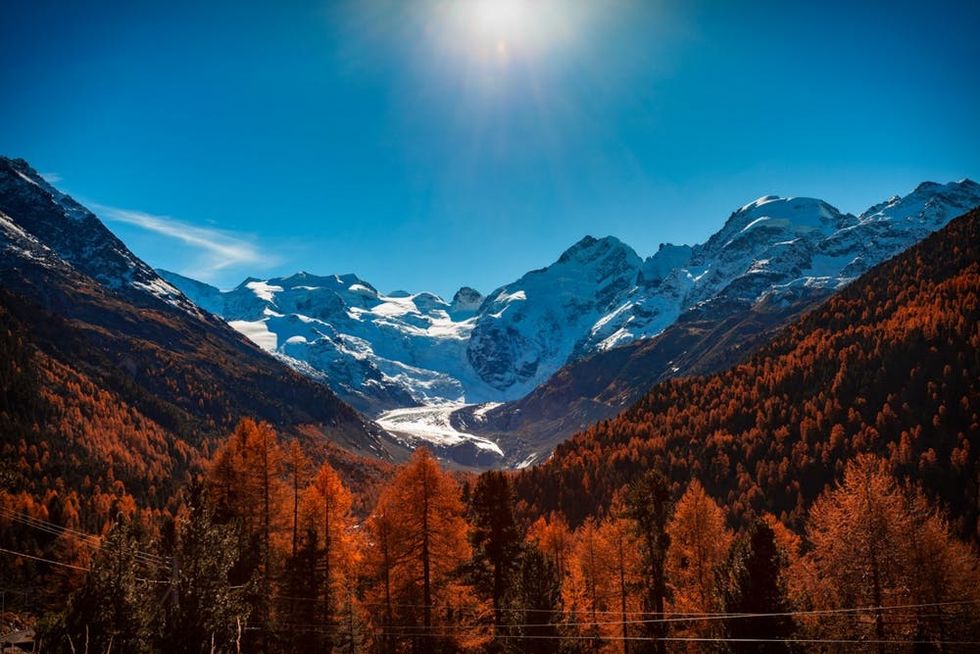
4. Afternoon Tea and Old-World Charm in Pontresina:Pontresina is smaller than St. Moritz, and the small-town feel in the community is alive and well in this Alpine village, which is underrated by foreigners but worshiped by natives. St. Moritz can have the glitz and glamor and weekend visitors; Pontresina is just fine (shall we say: just perfect?) exactly the way it is. One of the most perfect things in Pontresina is the Grand Hotel Kronenhof. The village is known for its Belle Epoque hotels, and this Neo Baroque institution is nothing short of magnificent: the aptly named “Grand Dame” is simply too breathtaking to exist in real life. From the floor-to-ceiling windows to the baroque architecture that’s so #AccidentallyWesAnderson one wonders whether it’s on purpose, the Kronenhof is heaven on earth.
Visit for afternoon tea beneath one of the many gorgeous chandeliers (Switzerland loves a good chandelier), and observe the most spectacular view of the Alps. But it’s not the beauty alone that makes this hotel such a welcoming getaway. Unlike five-star hotels in, say, New York, where they communicate their exclusivity with snobbishness, the staff at the Grand Hotel in Pontresina (and truly throughout the hospitality industry in Switzerland) are genuinely kind. Now that’s something to write home about.
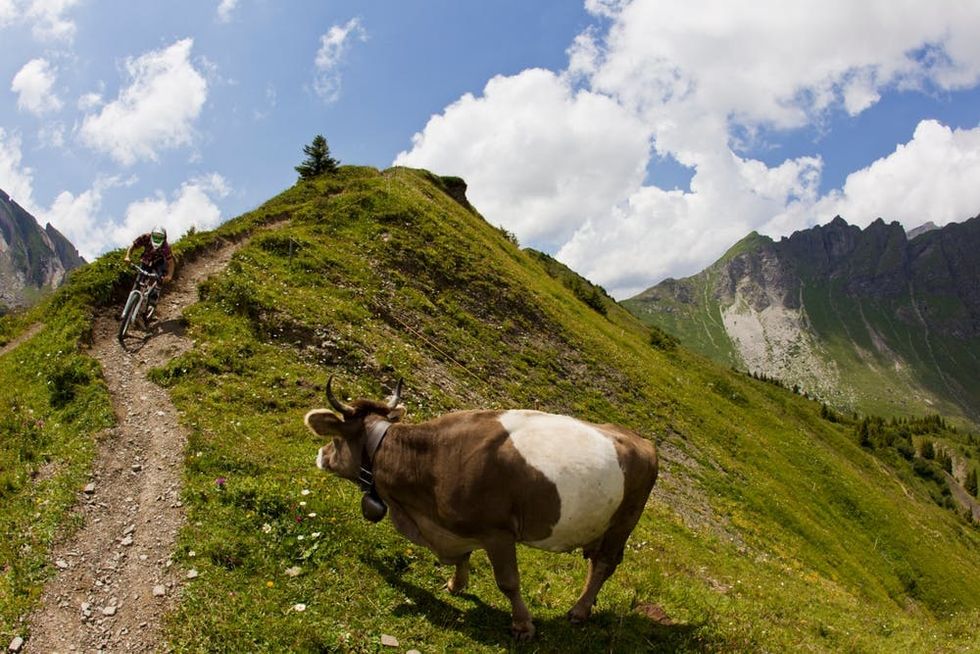
5. Mountain Biking in the Swiss Alps: When you’re biking up a mountain, even if your wheels are electric, that qualifies as mountain biking, right? I realized I’d inadvertently conquered my fears on an e-bike tour of Pontresina with my fearless guide, Reudi Christen. While I started that morning not realizing I had to use both hands on the brakes (a rookie mistake), I finished later that afternoon having managed to ride my bike over to the Morteratsch Glacier, where the post-apocalyptic landscape doubled as a cautionary advertisement against ignoring climate change. Book an e-bike tour with Reudi when in the Engadin Valley, or consult him for ski lessons too — this alpine athlete is multitalented.
By the time I hopped back in the saddle for an e-bike tour of Bad Ragaz with Alex Schumacher, I felt like a relative pro. Of course, we were now in the foothills of the Alps, so the territory was far less treacherous. Stop by Heidiland for endless Instagram opportunities (and the opportunity to commune with belligerent baby goats), and stop for a glass of wine along the way — you are in the Graubünden wine region, after all. We recommend that you always sign up for a tour for your first time on an e-bike, and Alex is a perfect teacher. Head on over to the e-bike station in Bad Ragaz to see if you can give new meaning to the phrase “hell on wheels.”
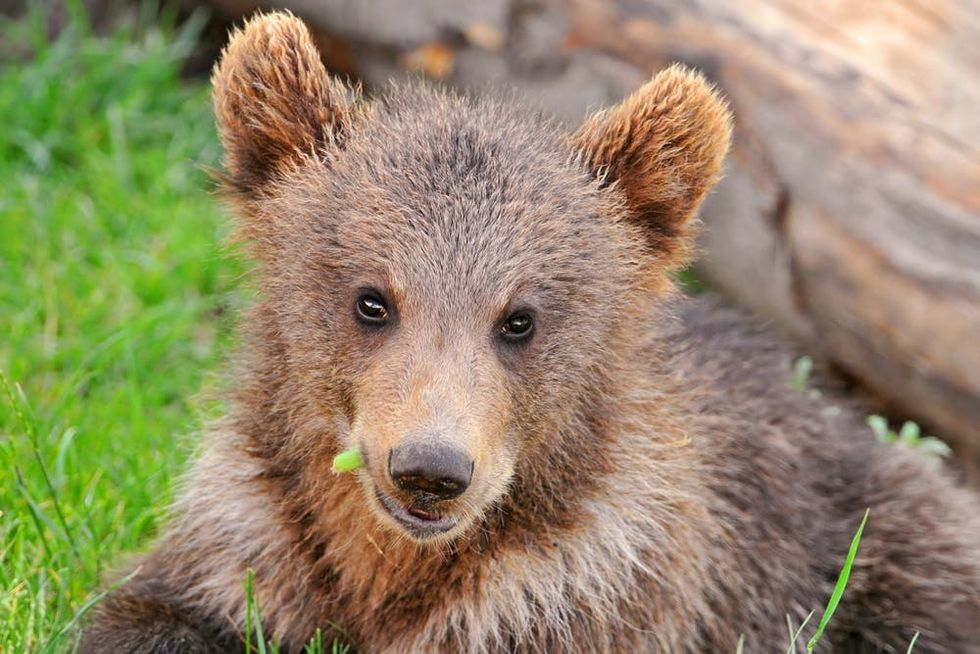
6. The Bears of Bern: Explore the sidewalk cafés and cobblestone streets of the Old Town of Bern (a UNESCO World Heritage Site) to enjoy the charms of the city after the summer tourists have gone home. Capitalize on warm weather by biking around the capital city (via Schweizrollt bike rentals) or rafting on the Aare River — both activities are still available through the end of October. Keep that magical feeling alive with a stay at Schweizerhof Hotel & Spa, where Audrey Hepburn was known to dance in the elegant ballroom. Even if you don’t stay at the Schweizerhof, the hotel’s restaurant, Jack’s Brasserie, is required dining. Order the schnitzel (of course). The establishment is a favorite of Roger Federer — if you look closely enough at all the engraved seats, you might just find his name plaque.
Finally, a visit to Bern isn’t complete without a trip to BärenPark, the Bern Bear Park that’s open all year round to host the hirsute (and lackadaisical) symbol of the city. Watching the bears frolic on the banks of the River Aare, it’s easy to believe you actually are living in a fairy tale.
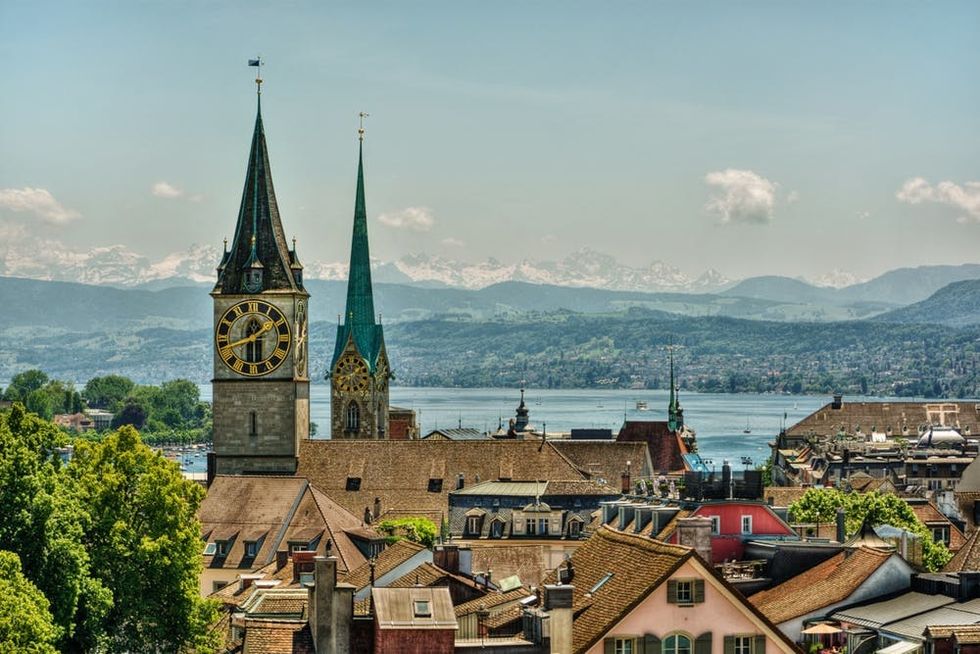
7. Festival Season in Zurich: The Zurich Film Festival is growing in popularity and makes the fall an especially appealing time to visit Switzerland’s largest city. Zurich also boasts the country’s largest Oktoberfest, though you don’t need to be visiting only on those weekends to enjoy your autumn trip. Sailing and boating is extremely popular in Zurich, and it’s still warm enough to swim in Lake Zurich in September and early October. (People swim in Bern, Lausanne, and Geneva too.)
The clarity of the water in Lake Zurich (a vibrant green like the Caribbean, seriously) is astounding, but that’s actually the norm in Switzerland. Speaking of water activities, visit the Frauenbad at Stadthausquai, a women’s-only bathing club that becomes the co-ed Barfussbar (or “barefoot bar”) at night. As for accommodations, the Widder Hotel is the dream destination in Zurich: The hotel’s sleek juxtaposition of modern and historic mirrors the layout of Switzerland’s largest city, divided between the Old Town and the new.
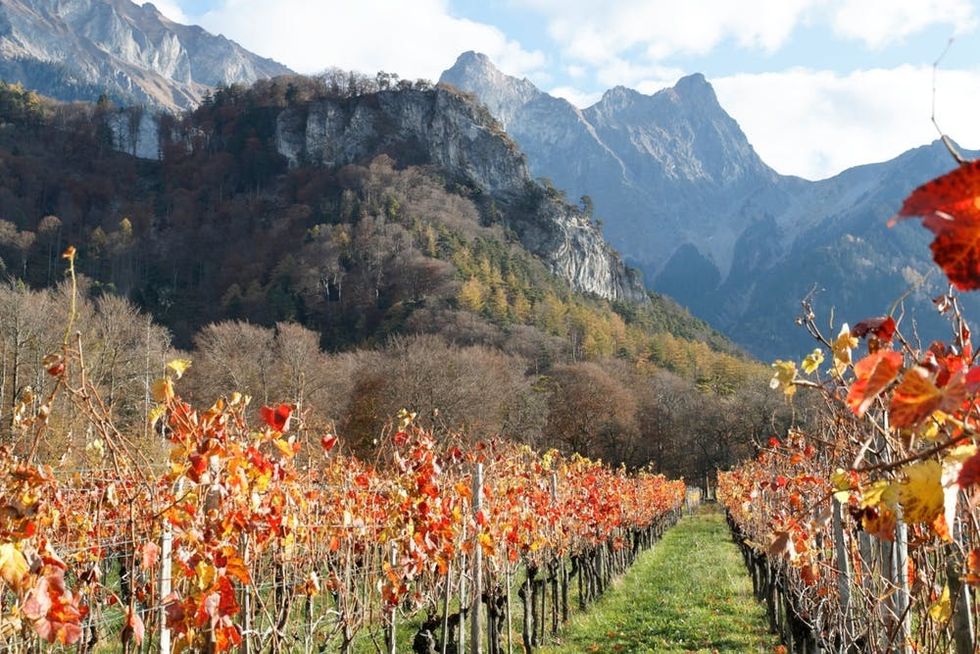
8. Vineyard Hopping in the (Severely Underrated) Swiss Wine Country: April showers may bring May flowers, but we prefer the change of seasons in the autumn, when falling leaves coincides with the ripening of (not so proverbial) fruits. That’s right, we’re talking about the annual harvest of vineyards all over the world — and nowhere are they more beautiful than in the Swiss countryside.
Explore Bündner Herrschaft in the northernmost region of Graubünden wine country (especially the villages of Jenins and Fläsch). Order their famed Blauburgunder (Pinot Noir) wines, and partake in the specialty variety available only in the fall, the Sauser. You can only order it during a span of a few weeks, as it’s developed before the fermentation process begins, making it a nonalcoholic boon to those who envision themselves detoxing in the nearby resort. It tastes delicious, so order this guilt-free unfermented grape juice while you can. Lausanne and Geneva are also home to wonderful regional wines.
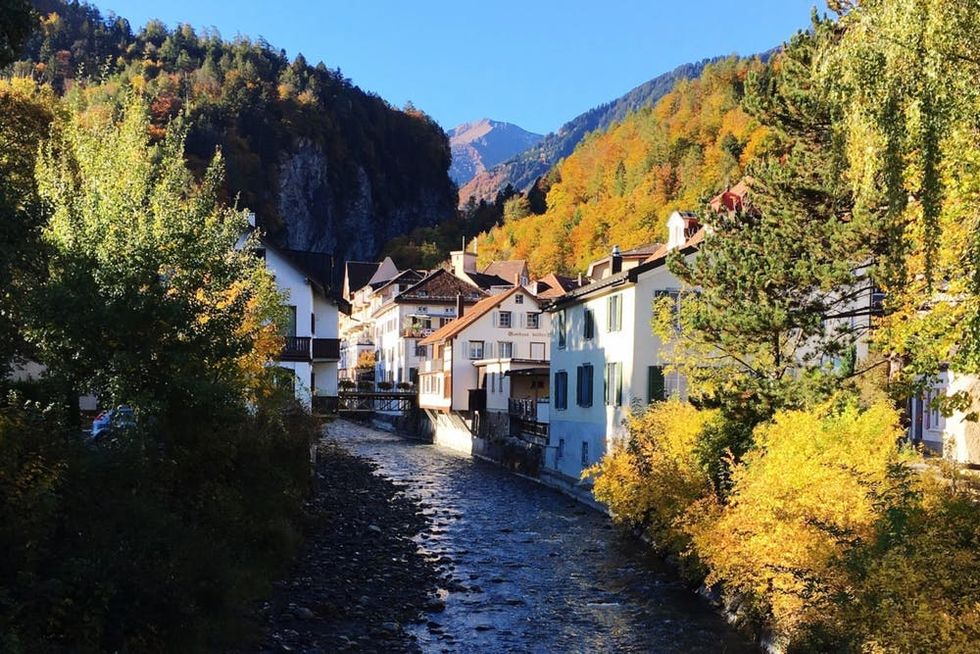
9. The Thermal Baths of Bad Ragaz: Wellness retreats may be all the rage in 2018, but the thermal spa in the tiny village of Bad Ragaz, 10 minutes from the Lichtenstein border, was the first of its kind. The healing properties of its thermal baths have drawn visitors to the Rhine Valley at the foothills of the Swiss Alps for the past 800 years. Nearly a millennium later, to stay at the Grand Resort Bad Ragaz is an exercise in meditative luxury. How can anyone go back to real life after living in such a dream? I haven’t adjusted yet, but I’ll keep you posted.
One visit to the Grand Resort will have you convinced there is something supernatural about the region — and not just because of the Light Ragaz show that runs through the end of every September. The light show tells the story of the history of the natural spring inside the Tamina Gorge. Villagers had long believed that a dragon lived inside, so the gorge remained unexplored for generations until some fearless 13th-century townspeople decided to test their fate. While they didn’t discover a dragon, what they uncovered would also become the stuff of legend. It’s believed that for every sip of the mineral-rich water (known as the “blue gold of Bad Ragaz”) you live another year longer. The water lures billionaires from every continent: Princes and oligarchs and hedge-funders alike clamor to indulge in its legendarily age-defying properties.
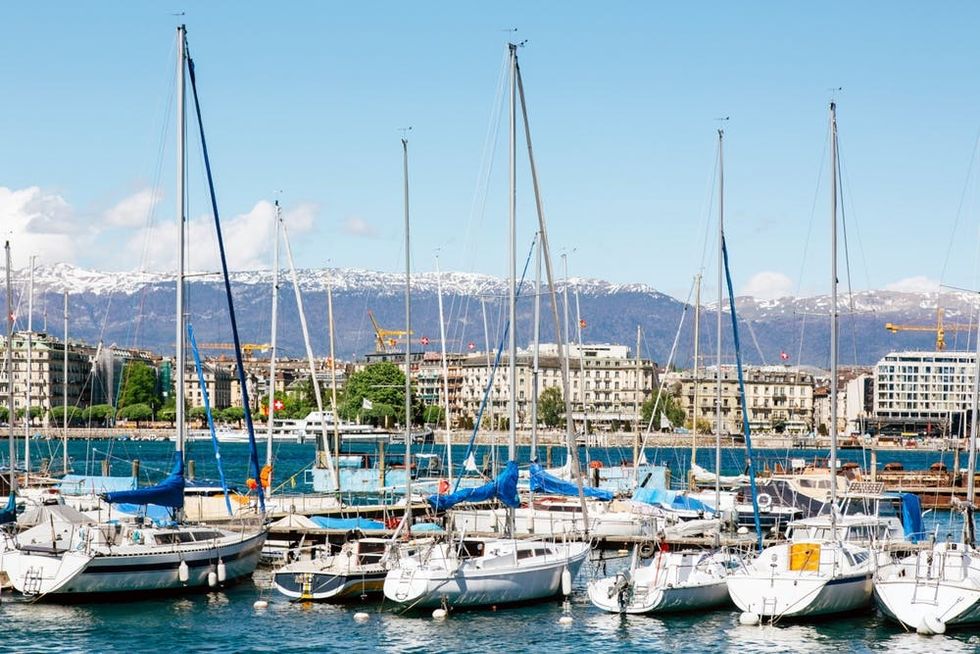
10. Chocolate-Making and Wine-Tasting on Lake Geneva: Good news for all of you high school French students. There are four official languages in Switzerland — German, French, Italian, and Romansh (an ancient Romance language occasionally spoken in the Engadin Valley) — and Lausanne and Geneva are #treschic cities where the population shares a language with the City of Light. So what unites a country of people who speak different languages? Cheese, chocolate, high standards, and quality — in all things, it seems. Indulge in one of the country’s beloved food group in the city of Lausanne with a chocolate-making class at Durig Chocolatier.
Lausanne’s vibe feels young and excitable — the Olympic City is home to a multitude of universities, not to mention a palace. Rent a room at that Lausanne Palace if you want to live like Marie Antoinette (post-cake, pre-beheading, of course). Start your day right with a spa visit, then follow it with a wine tasting at the gorgeous resort. (Who says vino is only for the nighttime? Obviously not us.) The view of Lake Geneva is unforgettable, and the Habana Bar downstairs is similarly intoxicating. Just wait for the piano player to come on — nightlife pianists are another sophisticated element of city life that the Swiss do very well.
Next, head to Geneva. It’s the most international city in Switzerland, though it still retains that cozy, sophisticated feel — there’s a reason the Swiss call cities “boutique villages.” Stay at Beau-Rivage, a historic (and divine) property overlooking the lake. Wine tastings are popular in Geneva too, as are boat rides on the gorgeous lake (always accessorized by a flock of swans). Assemble your friends for a dinner cruise on Lake Geneva, and visit both cities in one night — you can even go to France if you feel so inclined. But why bother leaving the country when Switzerland has everything your heart could possibly desire and even more? The only comforting thought during your return flight on Swiss Air will be, “I’ll come back next year.” Here’s to many returns.
Where are you most excited to travel this autumn? Let us know @BritandCo!
(Photos via Getty)





